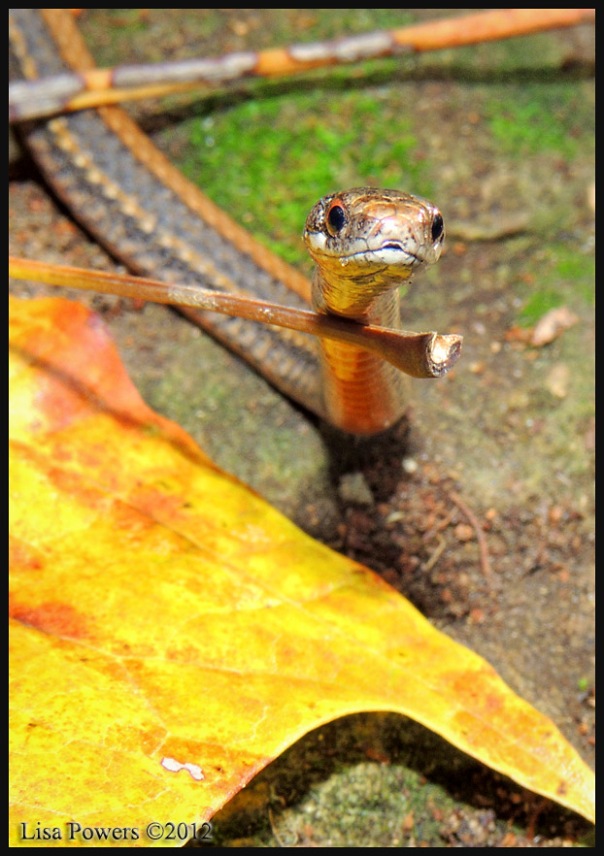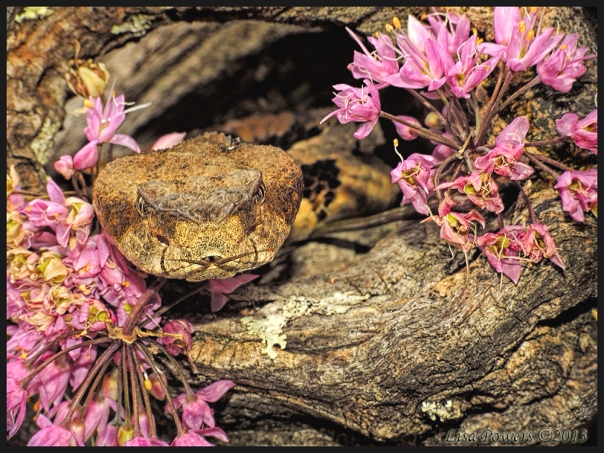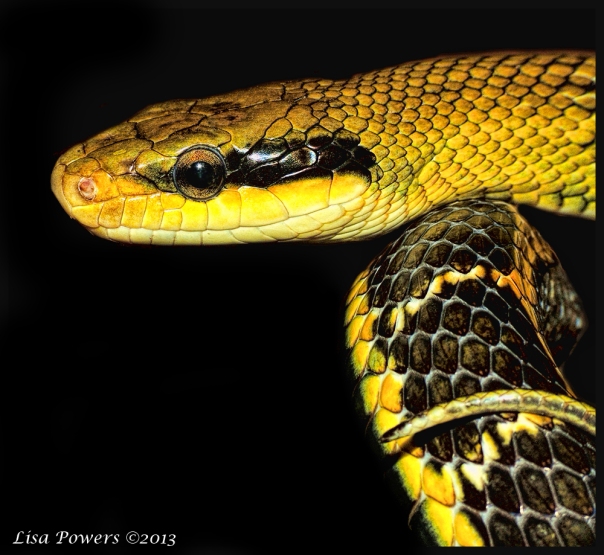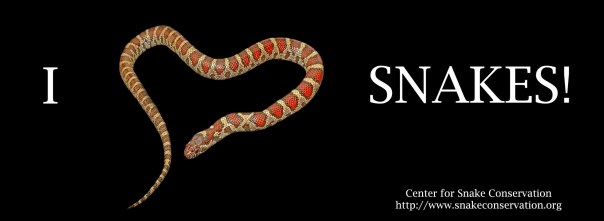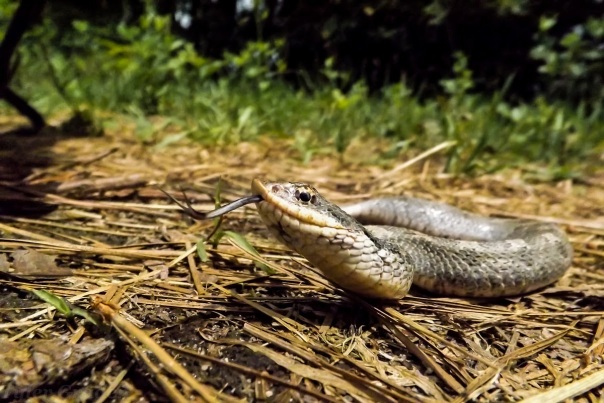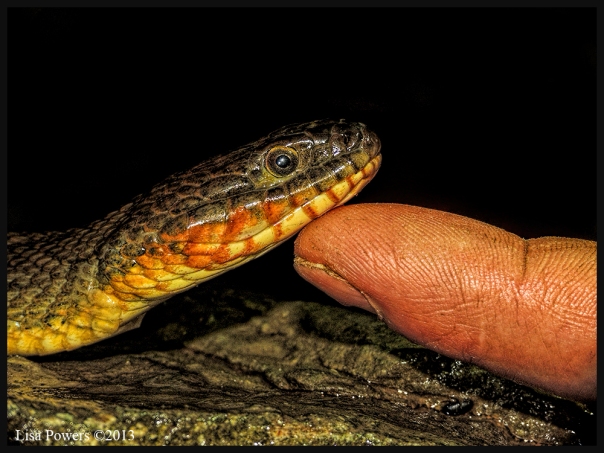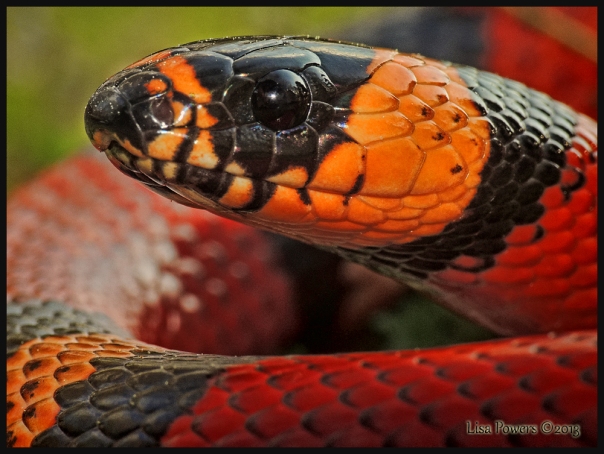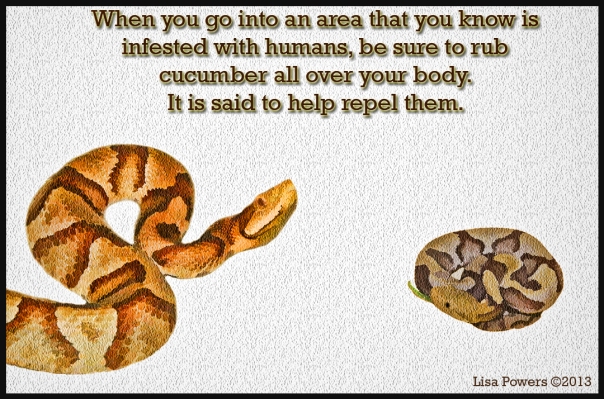Snake Fungal Disease and Project Noah update
Greetings Snake Lovers,
For many of us here in the northern hemisphere, snake spottings will be few and far between for the next month or so. But please be on the lookout when you are out and about, as snakes that are ill will often come out and bask on sunny days. With the uncertainty of how widespread and how it is going to effect snake populations, it is important to be aware of Snake Fungal Disease and identify possibly infected snakes. Swabbing and culture is the only sure fire way to be certain. But documenting unusual behavior can help alert biologists to areas that need to be checked. To learn more about Snake Fungal Disease: http://www.nwhc.usgs.gov/disease_information/other_diseases/snake_fungal_disease.jsp
Project Noah and the Center for Snake Conservation are active partners in helping with the conservation of snakes. It is our goal to educate people about the need and importance of snakes and ways to safely observe them. We hope you’ll support us on this mission by joining Project Noah today and adding your snake spottings to the Snakes of the United States -CSC mission.
This week finds our Project Noah-CSC SNakes of the United States mission at 2707 spottings. We now have 1091 PN users, an addition of 27 new members. Thank you to all who have contributed!
Our spotting of the week is this beautiful environmental portrait by PN member AshleyT
http://www.projectnoah.org/spottings/40001007
Happy Herping,
Lisa
CSC – Project NOAH Update
As winter approaches here in the northern hemisphere, many of our snakes become less active. But some of the smaller species are more often observed at this time of year. Because they have a much smaller mass to heat up, they can move about more readily during cooler temperatures. These smaller snakes are often mistakenly identified as baby snakes (occasionally it is a baby snake) by people who have found them out foraging in the cooler weather. Earthsnakes, wormsnakes, Dekay’s brownsakes, ring-necked and red-bellied snakes (seen above) are often much easier to find at this time of year. So keep your eyes peeled and remember…the herping ain’t over just because it is a little cooler out.
Please join me in wishing CSC founder and executive director Cameron Young a very Happy Birthday! We hope you will have many more to come too!
Project Noah and the Center for Snake Conservation are active partners in helping with the conservation of snakes. It is our goal to educate people about the need and importance of snakes and ways to safely observe them. We hope you’ll support us on this mission by joining Project Noah today and adding your snake spottings to the Snakes of the United States -CSC mission.
This week finds our Project Noah-CSC SNakes of the United States mission at 2679 spottings. We now have 1064 PN users, an addition of 63 new members. Thank you to all who have contributed!
Our spotting of the week is this beautiful environmental portrait by PN member JeffreyDuby of a Florida banded water snake.
Lucy Grace Slithers By
Center for Snake Conservation Teacher, Lucy Grace, got some outdoor free time today. Snakes move with amazing grace and this short video demonstrates how a Reticulated Python moves in short grass. All the CSC Teachers get outdoor free time when staying with our educators between Educational Program. This keeps the healthy and exercised.
CSC – Project NOAH Fun Fact
Project Noah
Fun Fact: The timber rattlesnake was one of the first symbols of the United States of America. Ben Franklin once wrote of the rattlesnake, “I recollected that her eye excelled in brightness, that of any other animal, and that she has no eye-lids. She may therefore be esteemed an emblem of vigilance. She never begins an attack, nor, when once engaged, ever surrenders: She is therefore an emblem of magnanimity and true courage.”
Timber rattlesnake spotted by PN member and herpetologist LisaPowers (Please be sure to look at the whole series):http://www.projectnoah.org/spottings/38495226
If you live in the United States and want to know how to tell venomous from nonvenomous snakes, please read our PN Blog:
http://blog.projectnoah.org/post/31728621331/venomous-or-nonvenomous
Please remember to upload your spottings for snake week!
CSC – Project NOAH Snake Count Continues through Sunday
Snake week ends this coming Sunday, but that doesn’t mean you have to stop admiring the beauty they bring to the world. Please enjoy the video below and remember to keep fighting for snakes everywhere.
Please enjoy this Project NOAH blog on Fassscinating Sssnakes!
http://blog.projectnoah.org/post/32121337669/my-fascination-with-snakes
CSC – Project NOAH
As snake week continues, we want to remind you to remember to send in your data. The Snake Count is a first step towards understanding the conservation needs of snakes. We need your help to make it successful. We are excited to partner with Project Noah (www.projectnoah.org) to help collect and manage data. Project Noah is a GREAT tool to explore and document wildlife and a platform to harness the power of citizen scientists everywhere. Sign up and download their free smartphone app today. Do not worry; we will still accept data via email, our online webform, or hardcopy if you do not have a smartphone or GPS. This count is going to be incredible! Check out the FAQ page on www.snakecount.org to help you have a great Snake Count. This next week will be a very exciting one here at the CSC and I sincerely hope you can share in our excitement!
Our featured Project NOAH snake today, finds us traveling the globe to the Philippines where the unusual and totally aquatic little wart snake lives. Be sure to check out the series of photos by PN member ZebulonHoover.
http://www.projectnoah.org/spottings/19737134
One of the wonderful things about Project NOAH is the opportunity to see amazing animals and plants from around the world and to connect with the people who spotted them. In one of our blogs last year, herpetologist Aaron Goodwin explored, ” Snakes in Mythology, Religion and Folklore”. Check out the link below to learn more:
http://blog.projectnoah.org/post/31794894395/snakes-in-mythology-religion-and-folklore
Thanks,
Lisa Powers
CSC – Project NOAH Cool Photo Series
Snake Week is here!
Check out this fabulous series of an Eastern Hog-nosed Snake by Project NOAH member TylerGraden at: http://www.projectnoah.org/spottings/27267251
The Snake Count is a first step towards understanding the conservation needs of snakes. We need your help to make it successful. We are excited to partner with Project Noah (www.projectnoah.org) to help collect and manage data. Project Noah is a GREAT tool to explore and document wildlife and a platform to harness the power of citizen scientists everywhere. Sign up and download their free smartphone app today. Do not worry; we will still accept data via email, our online webform, or hardcopy if you do not have a smartphone or GPS. This count is going to be incredible! Check out the FAQ page on www.snakecount.org to help you have a great Snake Count. This next week will be a very exciting one here at the CSC and I sincerely hope you can share in our excitement!
CSC-Project NOAH Fall Snake Week
As snake week begins, I thought it would be a good idea to revisit some of our past blogs. This one discusses the why and how of a snake count.
http://blog.projectnoah.org/post/31585455533/snakes-alive-recording-snake-distribution-diversity
Want to know more about Fall Snake Week? Visit the CSC page for more information and commonly asked questions: http://www.snakeconservation.org/home/CSC-announcements/fallsnakecounthasbegun
Fall Snake Count Has Begun!
Snake Count Participant –
Are you ready to count snakes? The forecast for the opening weekend of the Center for Snake Conservation Fall Snake Count is for more rain at the CSC headquarters. However, despite the rain, we plan on turning up a few gems this weekend and then count many, many snakes next week. Follow us on Twitter (@CSCSnakeTweet) or on Instagram (cscsnake) to see what the CSC finds during the Snake Count as we find them. We have folks registered for the snake count in 47 of the 48 states with snakes (missing Delaware so get there if you can!) so this is going to be an amazing Snake Count!
The Snake Count is a first step towards understanding the conservation needs of snakes. We need your help to make it successful. We are excited to partner with Project Noah (www.projectnoah.org) to help collect and manage data. Project Noah is a GREAT tool to explore and document wildlife and a platform to harness the power of citizen scientists everywhere. Sign up and download their free smartphone app today. Do not worry; we will still accept data via email, our online webform, or hardcopy if you do not have a smartphone or GPS. This count is going to be incredible! Check out the FAQ page on www.snakecount.org to help you have a great Snake Count. This next week will be a very exciting one here at the CSC and I sincerely hope you can share in our excitement!
Participants have expressed concern about the collection and potential release of specific geographic locations during the Snake Count and the effect this may have on snake populations. The CSC shares these concerns for many rare, threatened, or endangered species across the world. Please see the Snake Count FAQ and below for more information about how to protect these sensitive locations.
Thank you, please be safe, and have fun counting snakes!
Cameron
—
Snake Count Frequently Asked Questions: You can review the Snake Count FAQs here: FAQs.
Specific Geographic Location Concerns: Participants have expressed concern about the collection and potential release of specific geographic locations during the Snake Count and the effect this may have on snake populations. The CSC shares these concerns for many rare, threatened, or endangered species across the world. That said, we do ask that you collect and provide data at least to the county level during the Snake Count. This will help us analyze trends, look for new distributional records, and provide current, accurate data to scientists and state wildlife agencies after the count. If you use the Project Noah smartphone application, GPS coordinates will automatically be recorded for you. If the location you are in is sensitive or your secret spot, the Project Noah software will allow you to move the pin for the location. We ask that you move the pin to the nearest town or other landmark and notify us that the pin was moved in the “comments” field when entering data. This way we can protect sensitive snakes and locations while conducting a thorough census of snakes during the Snake Count.
Snake Count Contest: Herpers are naturally competitive so we added a Contest to the Spring Snake Count. In short, each snake species in North America has been assigned a point value (Range is 1-50 Points) based on its rarity, detectability, and geographic range. Bonus Points will be awarded for submission to Project Noah (5 Points Each), New County Records (10 Points Each), and New State Records (Range from 15-50 Points Each). Prizes will be awarded to the Overall Highest Point total and each Highest Point Total for each Snake Count Region. We will be announce prizes during the Snake Count which include a personalized Center for Snake Conservation Snake Hook, GoPro Hero 3 (prize pending), and other snake related items.
Snake Count T-shirts: We are selling Snake Count T-shirts through the CSC CafePress online store. Get yours today! http://www.cafepress.com/centerforsnakeconservation
Facebook: We will be posting daily results of the Snake Count on our Facebook page. Don’t forget to go to the CSC Facebook page and “like” us to stay updated.
Snake Count Toolkits: Don’t forget to visit the Snake Count Toolkit for datasheets and protocols to use during thesnake count if you are not using the Project Noah software. Snake Count Tool Kit
Events: Do you want or need to look for snakes with someone else? There are several events being organized by CSC volunteers across the country. If you want to host an event or are interested in having people join you during asnake count, please send us information so we can post it on our event link (send email toevents@snakecount.org).
Prizes: Yes, we will be giving away prizes to individuals who count the most snakes during the Snake Count. We will also be drawing random names from the list of registered participants to give away free CSC memberships throughout the week.
Need Help Identifying Snakes? Send your photo to us and we will identify the snake for you. Email photos tosnakeID@snakecount.org. If you are using Project Noah to submit your results, just click on the “Help me identify this species” to alert us and Project Noah’s team of Rangers.
Official Snake Names: The CSC has adopted an easy to use 9-letter shorthand code for snakes in North America. You simply use the first three letters of the genus, species, and subspecies to record a snake with NO overlap. If the species does not have a subspecies, simply enter XXX at the end of the code to make it nine-letters long. If you don’t know the scientific name of the snakes you observe, you can find the 9-letter code for each species in the state lists on the Snake Count website here. Please use this code on your datasheets to help simplify and organize your data. If all else fails, just write in what you know and we can figure it out.
Reporting results: There are 3 ways you can submit your observations from the Snake Count.
1. You can use your smartphone or computer through Project Noah to submit your data. Be sure to enter your spotting into the Snakes of the United States Mission or Snakes of the World Mission. If you are worried about giving away your secret location, remember to relocate the pin to the nearest city or other landmark. Please note in the comments that you did this so we can get it into our records.
2. You can submit data online using the form on the Snake Count website (www.snakecount.org/submit-results)
3. You can scan and email your datasheet to data@snakecount.org
4. You can mail your datasheets to the Center for Snake Conservation, 1581 Ridgeview Drive, Louisville, CO 80027
CSC-Project NOAH Update: Over 1000 mission members and over 2500 spottings!
Honduran Milksnake
Project Noah is an award-winning software platform designed to help people reconnect with the natural world. Our ultimate goal is to build the go-to platform for documenting all the world’s organisms, and through doing this we hope to develop an effective way to measure Mother Nature’s pulse. By developing tools to help the mobile masses share their encounters with nature, we are building a powerful force for crowdsourcing ecological data collection and an important educational tool for wildlife awareness and preservation.
PN and the Center for Snake Conservation are active partners in helping with the conservation of snakes. It is our goal to educate people about the need and importance of snakes and ways to safely observe them. We hope you’ll support us on this mission by joining Project Noah today and adding your snake spottings to the Snakes of the United States -CSC mission.
Remember to like our Facebook too! https://www.facebook.com/projectnoah
See what the press has said about Project NOAH:
http://www.projectnoah.org/press
This week finds our Project Noah-CSC SNakes of the United States mission at 2545 spottings. We now have 1001 PN users, an addition of 43 new members. Thank you to all who have contributed!
Our spotting of the week is this fascinating series by PN member rstillings of a Northern water snake feeding upon a catfish while a friend looks on:

